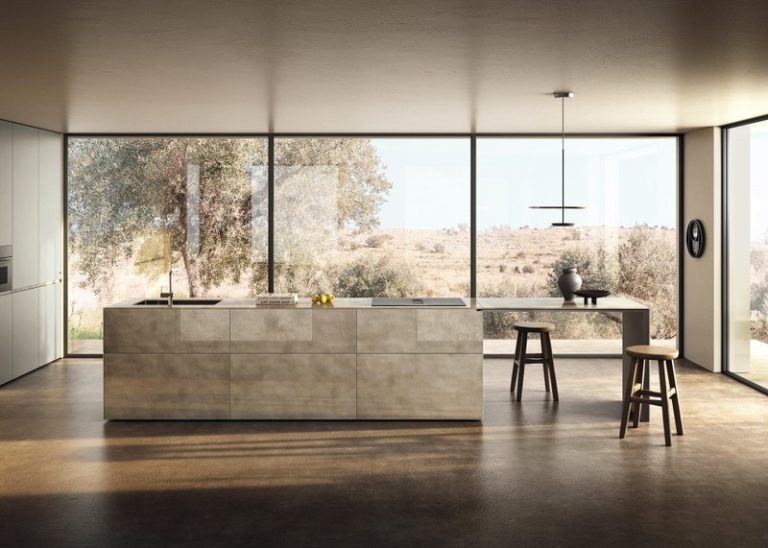In a world where lifestyles are evolving rapidly, interior design is adapting to meet new demands. Functional elegance has emerged as a tangible response: a design philosophy that merges timeless beauty with practical solutions. Italian furniture, renowned for its innate sense of aesthetics, now offers pieces that combine sophistication with everyday functionality.
Changing Interiors: New Expectations, New Solutions
Living spaces today look nothing like those of the past. Homes are becoming more compact, needs are shifting, and the boundaries between personal and professional life are increasingly blurred.
In this context, furniture must adapt to multifunctional interiors without compromising on aesthetics. This is where Italian design stands out: by embracing modularity, intelligent forms and the discreet integration of functions, it redefines every square metre with coherence and elegance.
Furniture becomes a partner in daily life, able to evolve with changing habits while visually shaping the space.
Harmony Between Form and Function: Mastering Balance
Functional elegance is founded on a delicate balance between usefulness and beauty. Modern Italian furniture embodies this quest for harmony. Every item – whether a sideboard, bed, kitchen or table – is designed to meet specific needs while maintaining a clean silhouette and a distinctive character.
The table becomes a convivial centrepiece, both adaptable and elegant. Sideboards go beyond storage, adding graphic presence to a room. Kitchens blend ergonomic design with visual lightness, while beds unite comfort with refined lines. Italian design, true to its heritage, never pits form against function – it allows them to work together seamlessly.
Premium Materials and Durability: Elegance Designed to Last
At the heart of functional elegance lies a commitment to quality. The choice of materials reflects the desire to create furniture that is both durable and aesthetically refined. In this regard, glass, wood and metal play a central role.
Wood, warm and organic, brings soul to a space. Metal offers a contemporary, structural touch, providing strength and lightness. Glass interacts with light and volume, creating transparent effects that visually expand a room.
Italian design masters the use of these materials, combining them with care to create interiors that are understated, elegant and built to last.
When Furniture Becomes a Solution: Living Better with Less
Faced with increasingly demanding interiors, Italian design offers practical solutions that optimise space without overwhelming it. Functional elegance here means meaningful simplicity: hidden storage, adaptable modules, furniture designed to serve multiple purposes.
This approach makes it possible to live better with less: less clutter, more comfort; fewer objects, more meaning.
Furniture becomes a true tool for organisation and wellbeing, enhancing daily life without ever compromising on style. It reflects a way of living where every detail matters, where every design choice balances form and function.
Lago: Italian Design Redefining Contemporary Spaces with Sophistication
In today’s Italian interior design landscape, LAGO holds a distinctive place. Founded in 1976 by Giuseppe Lago, the company has made a name for itself internationally through a strong identity and a refined design language centred on modularity. LAGO doesn’t merely produce furniture – it conceives spaces as an extension of the people who inhabit them.
The brand’s story is rooted in the Lago family’s artisanal tradition, which began in woodworking in the late 19th century. Since its expansion in the early 2000s with the arrival of the fourth generation, LAGO has successfully combined craftsmanship, technological innovation and a culture of design. Every creation reveals a keen eye for detail and a fine balance between tradition and modernity.
For LAGO, design is a means of transformation and connection. Each piece is imagined as a link between individuals and their environment, with a restrained aesthetic that endures over time, free from fleeting trends.
A key pillar of this vision is modularity: elements in the collections – whether kitchens, bookshelves, beds or tables – are designed to be freely assembled and adaptable to various architectural contexts.
This flexibility results in customisable compositions that harmonise with existing volumes. Thanks to this approach, each project becomes unique, aligned with the identity and needs of those who live in it.
An uncompromising focus on quality also guides the choice of materials: wood, glass, metal and fabrics are selected for their durability, elegance and environmental responsibility. LAGO embraces a sustainable industrial model that minimises waste and ecological impact.
Finally, the user experience is enhanced through advanced digital tools, including an intuitive online configurator. Present in more than 20 countries, the brand serves a diverse clientele – from residential to contract – while affirming a universal, open and forward-looking vision of design.









